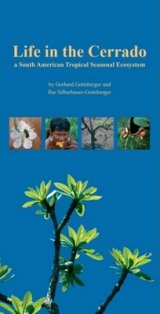Bezdek & Sekerka (eds.) 2024
Catalogue of Palaearctic Coleoptera Vol. 6/2/1: Chrysomeloidea II (Orsodacnidae, Megalopodidae, Chrysomelidae). Catalogue. Updated and revised second edition.
 XLIV, pp. 1-750. Hardcover. Der eigentliche Katalogteil.
XLIV, pp. 1-750. Hardcover. Der eigentliche Katalogteil.
Volume 6/2 of the Catalogue of Palaearctic Coleoptera focuses on the second part of the beetle superfamily Chrysomeloidea reported from the Palaearctic biogeographic region. For the genus and species-groups taxa all relevant names are given and all nomenclatural data are cross-checked and the distribution of species and subspecies is given per country or smaller region. A group of 14 experts have worked to collect data based on a critical review of published sources including a significant amount of new information.
Bezdek & Sekerka (eds.) 2024
Catalogue of Palaearctic Coleoptera Vol. 6/2/2: Chrysomeloidea II (Orsodacnidae, Megalopodidae, Chrysomelidae). References. Updated and revised second edition.
 VII, pp. 751-1116. Hardcover. Der References-Teil.
VII, pp. 751-1116. Hardcover. Der References-Teil.
Volume 6/2 of the Catalogue of Palaearctic Coleoptera focuses on the second part of the beetle superfamily Chrysomeloidea reported from the Palaearctic biogeographic region. For the genus and species-groups taxa all relevant names are given and all nomenclatural data are cross-checked and the distribution of species and subspecies is given per country or smaller region. A group of 14 experts have worked to collect data based on a critical review of published sources including a significant amount of new information.
Niedringhaus, Stöckmann & Wachmann 2025
Die Wanzen Deutschlands Band 2 (Tafelband): Bestimmungsschlüssel für alle Arten.
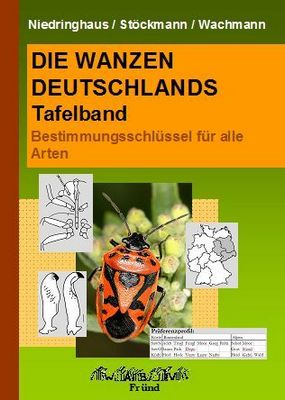 Endlich erschienen!!! Der Teil II enthält Bestimmungsschlüssel zu allen Arten sowie für jede Art eine 1/3 Seite mit allen wichtigen Angaben zur Bestimmung, Verbreitung, Ökologie, Biotoptypenpräferenz und Literatur. Strichzeichnungen und Fotos ergänzen die Angaben. Damit hat der Nutzer bis zu drei Artenp arallel im Blick! Ein Anhang zeigt Lebendfotos von Larven der Arten, soweit vorhanden.
Endlich erschienen!!! Der Teil II enthält Bestimmungsschlüssel zu allen Arten sowie für jede Art eine 1/3 Seite mit allen wichtigen Angaben zur Bestimmung, Verbreitung, Ökologie, Biotoptypenpräferenz und Literatur. Strichzeichnungen und Fotos ergänzen die Angaben. Damit hat der Nutzer bis zu drei Artenp arallel im Blick! Ein Anhang zeigt Lebendfotos von Larven der Arten, soweit vorhanden.
Ca. 500 S., 21x30 cm, Halbleinen, fadengeheftet mit drei Lesezeichenbändern. Über 900 Habitusfotos lebender Tiere sowie unzählige Detailzeichnungen und weitere Angaben zu den einzelnen Arten.
Rohe W 2025
Die Borken- und Eichenkernholzkäfer in Deutschland, Österreich und der Schweiz. Mit Splint und Eichenkernholzkäfern. Bestimmungsschlüssel, Artenportraits, Brutbilder etc..
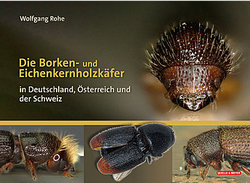 676 S., ca. 1000 farb. Abb., geb., 21 x 28 cm. Dickes Buch, ersetzt aber wegen der teilweise zu flauen Fotos (Flügeldeckenabsturz o.ä. Detaiils) nicht die Bestimmung mit Pfeffer 1995 Die Zentral- und westpalaarktische Borken- und Kernkafer (siehe oben unter Pfeffer) und mit FHL Band 10/14/15, in denen mehr mit Zeichnungen die wesentlichen Merkmale besser herausgestellt sind (Rezensionsrücklauf von Spezialisten Stand ESept25).
676 S., ca. 1000 farb. Abb., geb., 21 x 28 cm. Dickes Buch, ersetzt aber wegen der teilweise zu flauen Fotos (Flügeldeckenabsturz o.ä. Detaiils) nicht die Bestimmung mit Pfeffer 1995 Die Zentral- und westpalaarktische Borken- und Kernkafer (siehe oben unter Pfeffer) und mit FHL Band 10/14/15, in denen mehr mit Zeichnungen die wesentlichen Merkmale besser herausgestellt sind (Rezensionsrücklauf von Spezialisten Stand ESept25).
Verlagswerbetext (Auszug): Die Vielfalt und Dynamik der Borkenkäfer wird die Zukunft unserer heimischen Wälder in verstärktem Maße beeinflussen...Sie nehmen in heimischen Waldökosystemen eine zentrale Rolle ein und sind selbst eine bedeutende Nahrungsbasis für viele Tiergruppen. In Deutschland, Österreich und der Schweiz leben ca. 125 Arten....dadurch, dass der Klimawandel für die Zukunft neue Wälder erzwingt, wird es immer wichtiger, spezielle Artenkenntnisse zu Borkenkäfern und deren Biologie zu besitzen...
Settele et al. 2025
Ulmer Naturführer Schmetterlinge. Die Tagfalter (und Widderchen) Deutschlands. 4. erweiterte und aktualisierte Auflage 2025.
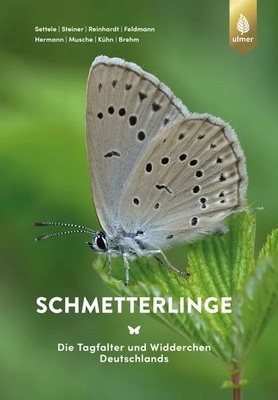 Schmetterlinge. Die Tagfalter Deutschlands. Josef Settele, Roland Steiner, Rolf Reinhardt, Reinart Feldmann, Gabriel Hermann, Martin Musche, Elisabeth Kühn, Gunnar Brehm. 4., erw. u. aktual. Auflage 2025. 288 S., 870 Farbfotos, 320 farbige Zeichnungen, Klappenbroschur.
Schmetterlinge. Die Tagfalter Deutschlands. Josef Settele, Roland Steiner, Rolf Reinhardt, Reinart Feldmann, Gabriel Hermann, Martin Musche, Elisabeth Kühn, Gunnar Brehm. 4., erw. u. aktual. Auflage 2025. 288 S., 870 Farbfotos, 320 farbige Zeichnungen, Klappenbroschur.
Alle heimischen außeralpinen Tagfalter und Widderchen bestimmen Sie sicher mit diesem Standardwerk Diese 4. Auflage jetzt komplett überarbeitet und erweitert durch 22 Arten Widderchen. Die Schmetterlinge werden mit Fotos von Ei, Raupe und Falter vorgestellt. Anhand von Verbreitungskarten und Grafiken zum Lebenszyklus erfahren Sie auf einen Blick, wo und wann jede Art zu finden ist. Dazu gibt es Informationen über Lebensweise, Vorkommen, Nahrungspflanzen, Gefährdung und Schutz. Extra: Fototafeln zeigen die Ober- und Unterseite aller Schmetterlinge lebensgroß und im direkten Vergleich. So finden Sie die eindeutigen Unterscheidungsmerkmale zuverlässig. DER Naturführer zu tagaktiven Schmetterlingen!
Top, Fritsch & Kononenko 2023
Noctuidae Europaeae Essential
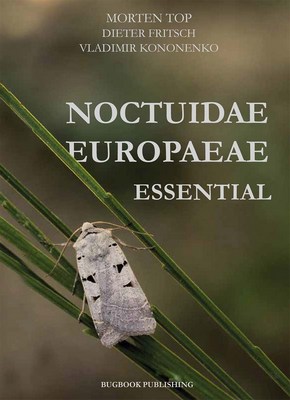 Hardcover. 840 pages. Hammer-Buch! Die neue Noctuiden-Bibel!
Hardcover. 840 pages. Hammer-Buch! Die neue Noctuiden-Bibel!
Noctuidae Europaeae Essential is based on the 13 volumes of Noctuidae Europaeae, 1990-2011, by Michael Fibiger, Entomological Press. The book deals with all 1623 known species of European Noctuids. The concise text describes habitats, flight periods, larval food plants and distribution of every European species and their distribution outside Europe. Other topics, including subspecies, generations, frequency and pests are also covered.
The European distribution for every species is shown on a clear map. The text and maps are fully updated.
The book contains photographs of more than 1500 living species of European moths, at rest in typical natural situations, and of more than 1000 of their larvae.
All the species are displayed as set specimens in natural size on 92 colour plates. This is an essential all-in-one book that is a must-have for experienced naturalists, and because of the user-friendly layout, it will also be of great use to the interested amateur lepidopterist.
